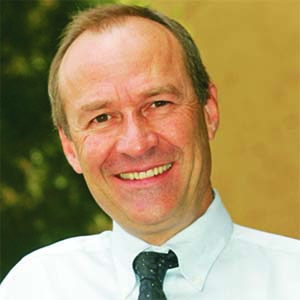Forty-six years ago, he became the youngest Formula One world champion. It was a record that lasted for three decades.
 By Graham Duxbury
By Graham Duxbury
But Emerson Fittipaldi – “Emmo” to his fans – was just getting started on the road to an exceptional career. It was a career that would provide the foundation for one of the greatest motorsport family dynasties.
Named after author Ralf Waldo Emerson by his Italian-Brazilian father and Polish-Russian mother, who both raced cars in Brazil in the immediate post-WWII period, young Emmo did not need too much encouragement to begin racing.
In common with many talented drivers, his climb up the ladder of success was meteoric. He raced motorcycles, hydrofoils and Formula Vee cars. He won the Brazilian FV championship at 21 and claimed a prestigious F3 title in the UK in 1969 less than a year after leaving Brazil to seek recognition for his skills in England.
His immediate success in F2 with the Lotus team led to a drive in F1.
Following the death of Jochen Rindt, Fittipaldi was thrown in at the deep end – as Lotus team leader. He rose to the occasion and won the 1970 American Grand Prix. It was only his fifth GP. Two years later he clinched the world championship at 25 years of age.
He followed this success with another world title in 1974, now with McLaren.
During this time, Emerson’s brother Wilson was also making his way into F1. Like his brother, successes in F3 and F2 led to a F1 drive with the Brabham team. He immediately scored a podium at the (non-championship) 1972 Brazilian GP.
However, Wilson didn’t reach the lofty heights attained by his brother and vacated the driving seat soon after setting up his own, Brazilian-backed, Copersucar-Fittipaldi F1 team.
Surprisingly, Emerson joined the fledgling family-run outfit in 1976, but success with this inexperienced team eluded him.
Retiring from F1, he turned to American Indycar racing and famously won both the Indycar title and the legendary Indianapolis 500 in 1989. He crowned his career with another Indy 500 win ’93, when he became one of the oldest drivers – at 47 – to win this iconic event.
Although he retired from motorsport in 1996, Fittipaldi made a surprise return to race in the one-off Grand Prix Masters event at Kyalami in 2005. He finished second behind fellow former F1 and Indycar champion Nigel Mansell.
The retirement of the Fittipaldi brothers did not mean the disappearance of the Fittipaldi name. Wilson’s son Christian made his debut in F1 in 1992 and took his first championship point at the Japanese GP that year. Wilson and Christian Fittipaldi thus became the first father-son duo to score points in F1. Others followed.
Although highly rated in F1, Christian ended his struggle with back-of-the-grid teams and followed in uncle Emerson’s footsteps, making his way to the US and Indycar. He placed second in the 1995 Indy 500.
Christian had better success in sports prototypes winning two IMSA Sportscar Championships in 2014 and ’15. Among his success are impressive wins at the Daytona 24-hour race in 2004, 2014 and 2018; the Sebring 12-hour in 2015 and the Watkins Glen six-hour in 2013, 2016 and 2017.
Emmo’s two grandsons Enzo and Pietro continue to keep the family name in the headlines.
Enzo, at only 14, made his UK racing debut in the 2016 Ginetta Junior Championship and soon afterwards was invited to join the Ferrari Driver Academy. He currently leads the highly-competitive Italian F4 championship after six races.
Pietro underlined his potential and innate talent by winning the 2014 Formula Renault and 2017 World Series Formula V8 3.5 championships. He is also a Ferrari Driver Academy member.
As it was for his grandfather and cousin Christian, the lure of racing in the US remains strong and this year Pietro joined front-running Dale Coyne Racing with the goal of competing in the Indy 500.
Deciding to include races in the 2018 World Endurance Championship in his schedule, he unfortunately suffered leg injuries in a serious practice crash for the Belgian round at Spa-Francorchamps.
Although ruled out of the Indy 500, he is well on the road to recovery and spent the iconic American race in the Dale Coyne pits “soaking up the special Indy 500 atmosphere” in preparation for 2019.
If Pietro makes in into F1, he will be the sport’s first third-generation racer at this level.
